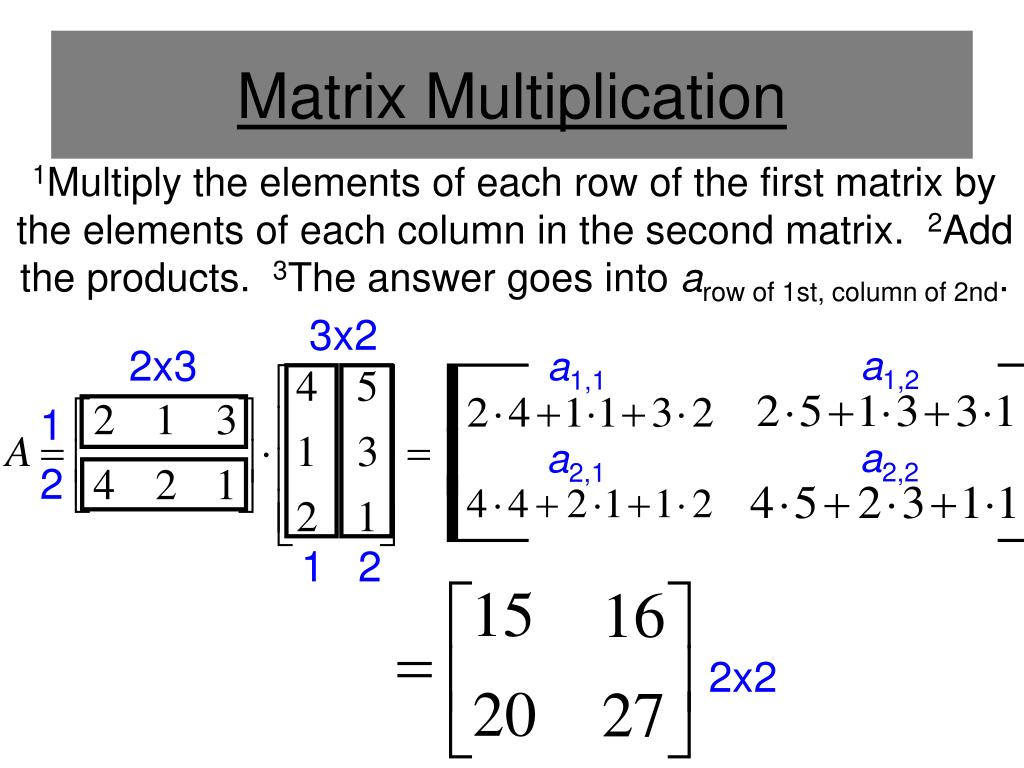

This is actually quite handy: you can display matrix calculations unevaluated. In order to add or subtract matrices, the matrices must have the same dimensions, and then one simply adds/subtracts the corresponding. MatrixForm wraps the matrix for display, preventing other operations from seeing it as a matrix. Multiplication of matrices generally falls into two categories, Scalar Matrix Multiplication, in which a single real number is multiplied with every other. Matrix division is considered in the next section. Any matrix multiplied by the null matrix is equal to the null matrix. We define four arithmetic operations on matrices: Matrix addition or subtraction, scalar multiplication, and matrix multiplication.This is called the multiplicative identity property: Also, any matrix multiplied by the identity matrix results in the same matrix.Multiplying two matrices and then transposing the result is equivalent to transposing each matrix first and then multiplying them but changing their order of multiplication:.But these type of matrices are very unusual. When the multiplication of two matrices gives the same result regardless of the multiplication order they are commuting matrices. In mathematics, particularly in linear algebra, matrix multiplication is a binary operation that produces a matrix from two matrices.

The product of matrices is not commutative, that is, the result of multiplying two matrices depends on the order in which they are multiplied:įor example, the following matrix multiplication gives a result:īut the result of the product is different if we change the order of matrix multiplication:.Matrix multiplication also has the distributive property, so:.Matrix multiplication is associative, so the following equation always holds: begingroup Maybe you can formulate the matrix multiplication as a sum and show in your post what simplification you desire.This type of matrix operation has the following characteristics: In fact, that is exactly what happens in most subroutines which do.
#MATRIX MULTIPLICATION MATHEMATICA CODE#
Since the first matrix has two columns and the second matrix has two rows: Sure, you can write a code to multiply two matrices using the definition in index form. However, if we reverse the order, they can be multiplied. Two matrices can only be multiplied if the number of columns of the matrix on the left is the same as the number of rows of the matrix on the right.įor example, the following multiplication cannot be performed because the first matrix has 3 columns and the second matrix has 2 rows: Due to the matrix multiplication rules, not all matrices can be multiplied.


 0 kommentar(er)
0 kommentar(er)
